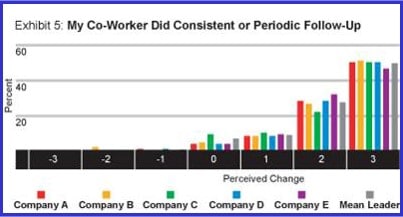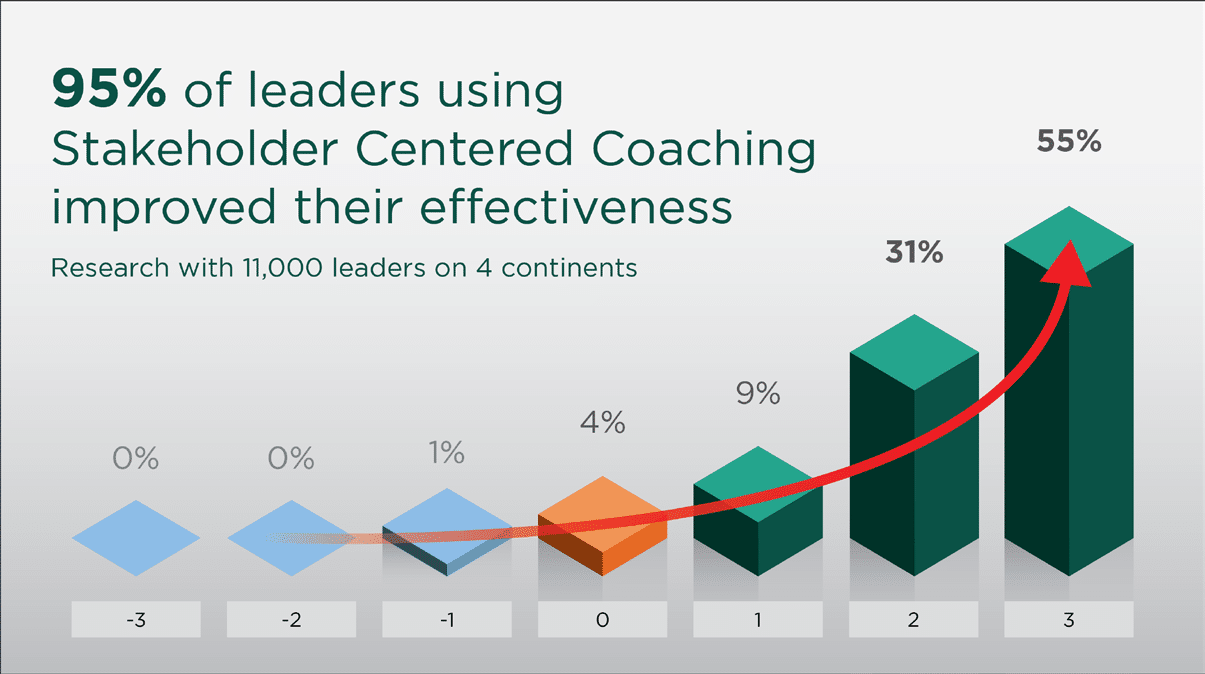Which is the best leadership development program worldwide?
In this article, I want to discuss research and an evidence-based approach to making any leadership development program effective. It is based on a study of 84,000 leaders on six continents. I will also talk about probably the best leadership development program in India and worldwide.
The business context and importance of leadership development programs
- The business environment is highly competitive.
- Change and disruptions are continuous.
- Leadership development is one of the top priorities of companies – based on multiple surveys of CEOs and boards done over many years.
- Companies spend significant sums of money on leadership development.
Is leadership development effective?
At some point of time or other CEO’s, boards and talent management professionals have asked these questions to themselves and to external consultants that offer and often claim to have the best leadership development programs –
- Does leadership development work?
- Does it have any measurable impact on leaders?
- Which developmental activities are effective and which are not?
- Which are the essential elements of an effective leadership program that helps leaders make positive and sustainable changes in their behaviors?
- And which is the best leadership development program in terms of its effectiveness?
Most leadership development programsare a waste of time!
An estimated $62 billion was spent worldwide on leadership development initiatives in 2014. And yet, the numbers on the effectiveness of leadership development programs are both shocking and depressing.
Watch: If you think most leadership programs are a waste of time, you may be right!
Here is why most leadership development programs fail.
The primary reason for the ineffectiveness or failure of leadership development initiatives is the fact that there is a fundamental problem with most of them.
Read: Why leadership training fails and the fail-safe solution for it
An extensive study of leadership development programs at EIGHT large multinational companies
In 2004, Marshall Goldsmith and Howard Morgan reviewed various leadership development initiatives in eight large multinational companies. It was a comprehensive study of over 86,000 leaders and executives globally, at these eight multinational companies.
Although the desired outcome for all companies was identical – sustained change in behavior at work – they used various tools and approaches. It included classroom-based training vs. on job practice, short-duration training vs. long-term interventions, coaching vs. mentoring, internal trainers and coaches vs. external trainers or coaches, etc.
A variety of approaches to leadership development programs at these eight companies
These companies and their leadership development programs varied and included –
- A defense contractor – Over 1,500 managers (mid-level to C-suite and the CEO) received a training program for two-and-a-half days. Each leader went through 360-degree feedback. An external consultant conducted the report sharing and debriefing session with the leader. All leaders received three reminders to follow up with their colleagues.
- A diversified services conglomerate – Over 6,700 managers (mid-level to C-suite and the CEO) received a two-day training program along with individual feedback from an external coach. Participants knew that a follow-up and measurement after the program was part of the plan.
- A telecommunications provider – Over 280 managers, including the C-suite team, received a one-day training, followed by multiple one-on-one coaching sessions with an external coach.
What was common to all these leadership development programs?
There were clear expectations established from the beginning. Each participant had to
- Take part in 360-degree feedback.
- Have a debriefing session with an internal or an external consultant
- Identify one to three areas to improve.
- Discuss these improvement areas with their team members
- Use the team member’s collective intelligence and observations to get suggestions on how to improve.
- Routinely follow up with team members to keep getting suggestions for improvement.
- Agree to be anonymously rated by their team members anywhere from three to fifteen months from the start of the leadership development program
Different measurement criteria for leadership development programs’ effectiveness
Instead of using the Kirkpatrick’s first level of evaluation – often known as the feel-good factor evaluation – Goldsmith and Morgan measured participants’ increased effectiveness because of the leadership intervention. This increased effectiveness – was not determined by the leader or the facilitator – but instead anonymously assessed by team members of the leader who had taken part in the leadership development. It is like companies getting feedback from the consumers of their products or services. Here, the product or service is Leadership, and the consumers are the team members of the leader.
So what matters most to the effectiveness of leadership development programs?
What causes on-job behavior change in leaders?
Besides the comprehensive study of 86,000 leaders at eight large multinational companies in 2004, Goldsmith and Morgan also conducted a second study with 248,000 people in 2014.
This second study followed the stakeholder centered coaching process that has the following three steps.
- The leader got 360-degree feedback from coworkers and team members.
- Based on the feedback, each leader decided 1-2 improvement areas to work on
- The process of improvement included asking for regular feedback and suggestions for improvement from coworkers.
Regularly, monthly, or every couple of months, the leader had to ask the team members these questions.
- How did I do during the last month or two – to improve my behavior?
- Please give me suggestions on what I should do (or stop doing) in the next month or two.
Every 3-4 months, the leader was anonymously rated by his/her team members, through a mini-survey. The question was simple – Has the leader improved in their chosen 1-2 improvement areas? The rating scale was a Likert scale from -3 to +3 as below.
- – 3 Much Less Effective
- – 2 Noticeably Less Effective
- – 1 Little Less Effective
- 0 No Change
- +1 Little More Effective
- +2 Noticeably More Effective
- +3 Much More Effective
It is the key to behavior change because of any leadership development program
Let us look at the following three graphs to understand the most critical factor essential for the success of any leadership development program.
Exhibit 1: My Coworker Did No Follow up
This first chart shows the Likert scale ratings of leaders by their stakeholders at various companies. Here there was hardly any follow up by the coworkers. Exhibit 1 below looks like a standard bell curve distribution. What does it show? It shows that there was a negligible difference made because of the leadership development program. Instead of attending leadership development, the leaders could watch TV, and you would still end up having a bell curve similar to the one in exhibit 1 below.
Exhibit 2: My Coworker Did Some Follow up
This second chart shows the Likert scale ratings of leaders by their stakeholders at various companies. Here there was some follow up by the coworkers. Following up r The follow up meant that the leader involved the coworkers, and they provided feedback to the leader on his/her behaviors. As you can see below in exhibit 2, the peaks are shifting to the right. What does it mean? With some follow up by coworkers, there was some improvement in the leader’s behaviors and hence the ratings.
Exhibit 3: My Coworker Did Consistent, or Periodic Follow up
This third chart shows the Likert scale ratings of leaders by their stakeholders at various companies. Here there was a CONSISTENT OR PERIODIC follow up by the coworkers. The follow up meant that the leader involved the coworkers, and they provided feedback to the leader on his/her behaviors – CONSISTENTLY and PERIODICALLY. As you can see below in exhibit 3, the peaks have shifted all the way to the right. What does it mean? It means that with CONSISTENT AND PERIODIC follow up by coworkers, there was a significant improvement in the leader’s behaviors and hence the ratings.
It is a significant discovery. What didn’t matter?
- The size of the company
- The business or industry of the company
- The leadership intervention type
What really mattered?
- The leader’s willingness to listen to a team member’s perceptions (via 360-degree feedback)
- The leader’s willingness to take action on improving and focus on just 1-2 areas to get better
- The leader’s willingness to involve team members (they have a ringside seat to a leader’s behaviors)
- Most important of all – consistent follow up of the leader with the team members and vice versa.
One additional factor that stood out from the best leadership program for executives
Leadership is not the relationship between the trainer and the leader or the coach and the leader. Leadership is a relationship between the leader and her team members. Kouzes and Posner’s study of Leadership for over 35 years proves this point.
To quote Kouzes and Posner
“Leadership is about relationships. Leadership is a relationship. Leadership is a relationship between those who aspire to lead and those who choose to follow. Through that relationship, leaders turn their constituents into leaders themselves.”
The best leadership program for executives in India and worldwide!
With the claim of the best leadership development program, there should be enough data to back it up.
These two studies – the first one in 2004 of 86,000 global leaders at eight multinational companies, and the second one of 248,000 leaders in 2018, proved beyond a shadow of a doubt that follow up is the key. It also proves that Marshall Goldsmith Stakeholder centered coaching leadership development program in India and worldwide is the best and most effective leadership development program.
Here are the results to prove it! 95% of the people using this program improved. Let me repeat that – 95% of the leaders using this leadership development program improved.
The best leadership development program worldwide
- Marshall Goldsmith’s leadership development coaching program is the largest leadership coaching program with over 3000 coaches in 55 countries.
- We have used this process with leaders in a large variety of companies (across companies, across countries, across cultures, across industries) to deliver measurable leadership growth.
- In fact, we are so confident that this process works – we often work with our clients on a no-growth no pay basis. What does it mean? If you hire us for your leadership development program, we will deliver measurable leadership growth – not as judged by the coach, or by the leader, but as anonymously rated by the leader’s team members!
NAL Triple Advantage Leadership Coaching
That delivers guaranteed and measurable leadership growth. It is based on a stakeholder-centered coaching process with a 95% effectiveness rate (in a study or 11000 leaders on 4 continents). It is used by companies ranging from startups to 150 of the Fortune 500 companies to develop their leaders.
Here are some of the salient benefits of NAL Triple Advantage Leadership Coaching
Time and resource-efficient: The leader does not have to leave work to attend training programs. We go to the leader and her team. And it only takes 1.5 hours per month. The rest of the time, the leader is working to implement with her team.
Separate and customized improvement areas for each leader: Every leader is different. One size fits all approach doesn’t work. Individual development areas for each leader aligned to the business strategy.
Involves entire team: Unlike most leadership programs, NAL Triple Advantage Leadership Coaching involves the leader’s entire team, and it has a cascading effect – increasing the team effectiveness and improving organizational culture.
The leader becomes the coach: for continuous improvement for leaders themselves and their teams. It is like kaizen for your leadership development.
Cost-Effective: Our entire one-year coaching engagement often costs less than sending the leader to a short duration leadership program at any reputed B school.
Guaranteed and measurable leadership growth: as assessed – not by us – but anonymously rated by the leader’s own team members.
Pay us only after we deliver results! : We work with many of our clients on a pay for results basis. What does it mean? If the leaders don’t improve, you simply don’t have to pay us.
Schedule an exploratory 15-minute conversation with our leadership adviser today
Click the button below.
References
Leadership is a contact sport by Marshall Goldsmith and Howard Morgan.








0 Comments